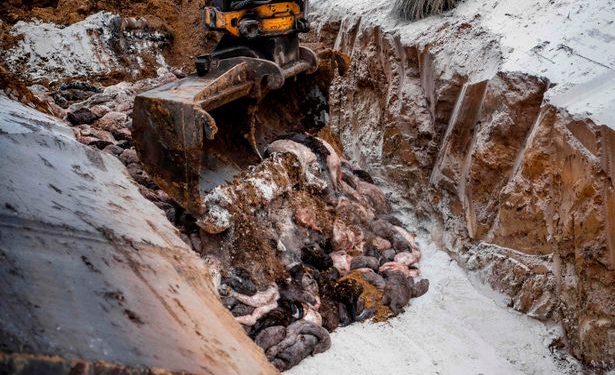The pictures from a military complex in Holstebro, Denmark appear to show thousands of minks resurfacing, after they were killed due to concerns over the spread of the disease.
Denmark implemented a nationwide cull of all minks after it became apparent the animals were carrying a mutated strain of Covid-19 which could be more resistant to vaccines.
When images of the infected mink graves were shared online, they were described as zombies that looked like had returned to life.
But in fact, there is a more scientific explanation for the bizarre incident. Experts say natural gases that form in their stomachs during decomposition and the light, sandy earth used to bury them in the mass graves contributed to the resurfacing.
Originally the minks were only being buried one meter deep in the mass graves, but will now be buried under 2.5 meters of soil, and the area is guarded to prevent any risks of infection.
The country has been trying to get the mink infections under control but outbreaks at farms have persisted.
Since June, 214 Covid-19 cases have been identified to be linked to the mink strain of the virus, with 12 cases identified as a unique variant.
As Europe’s largest producer and exporter of mink furs, the cull will kill as many as 17 million animals and could cost the state up to £800m.
The World Health Organisation said in a statement, the Danish mink mutation has “moderately decreased sensitivity to neutralizing antibodies.”
This means there is a chance it could be more resistant to vaccines, but the new strain is still not well understood and more research is underway.
The industry association for Danish mink farmers branded it a “black day for Denmark”, and said the government’s decision was a death knell for the country’s pelt industry.
Opposition to the cull worries it is an overreaction and that it will kill off a thriving industry.
Animal rights groups have generally welcomed the move as an end to an industry they brand cruel and unnecessary. France has instituted a similar cull, but on a much smaller scale, killing 1,000 animals so far.



